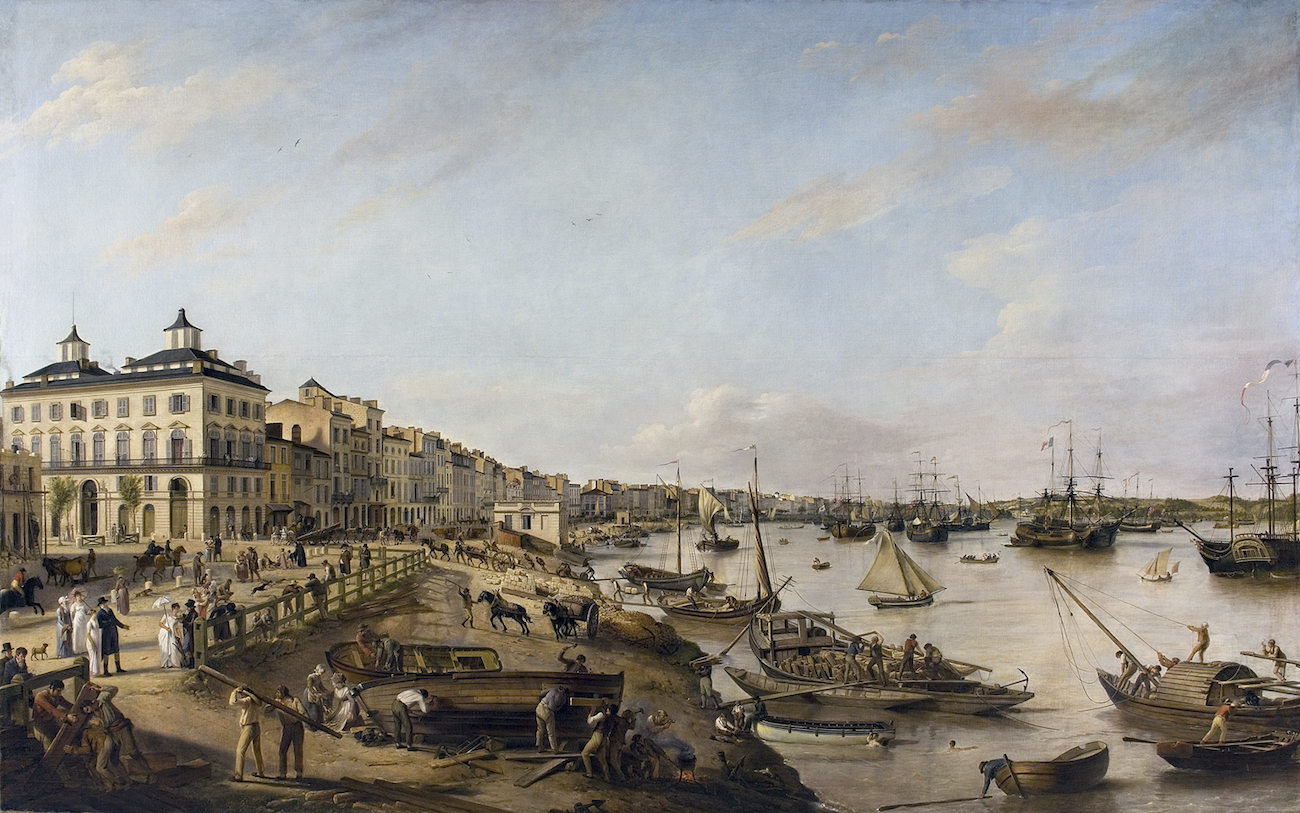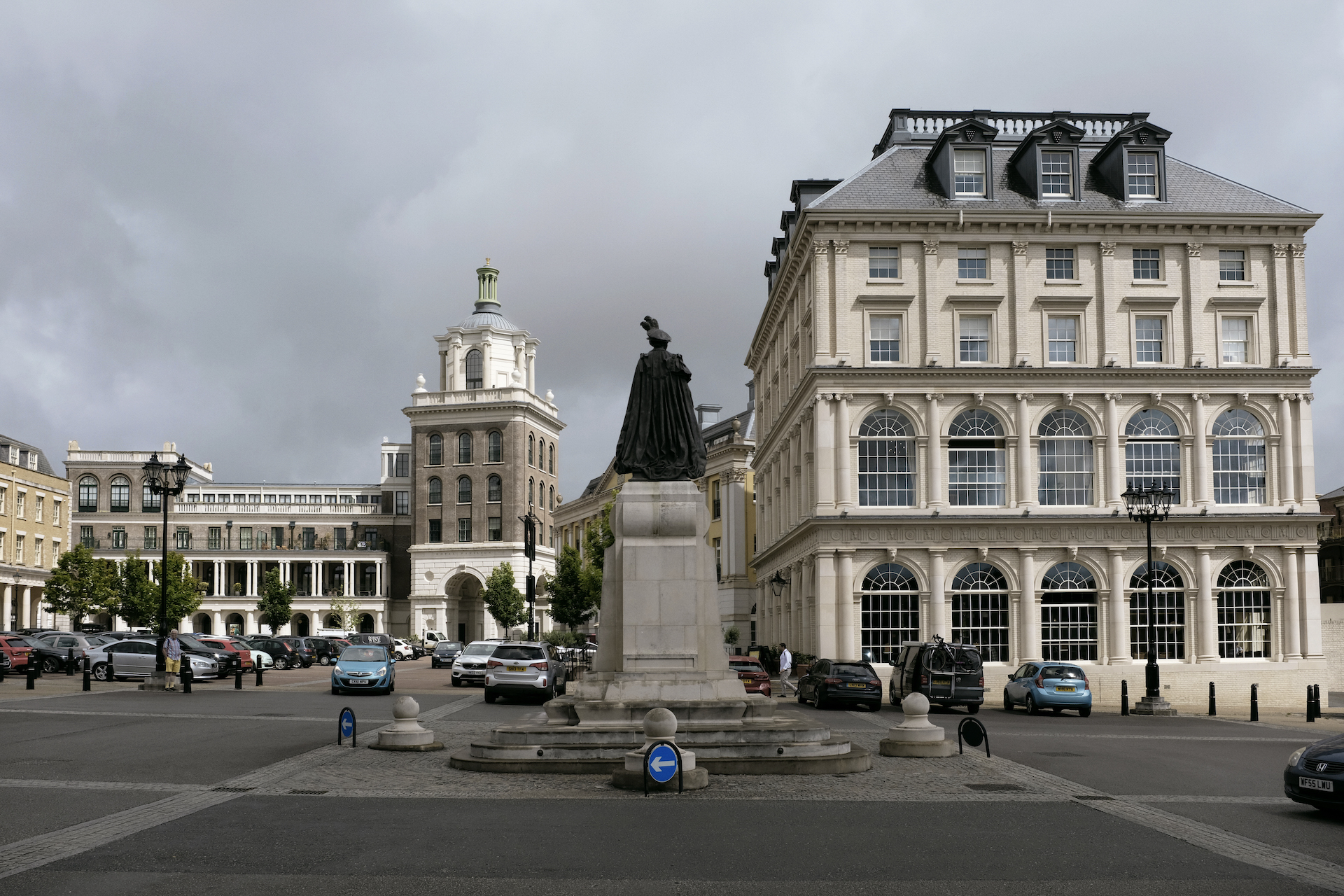THE SWEET TRACK I Avalon Marshes. Somerset Levels, England
A very very old pathway criss-crossing the beautiful Somerset flatlands. Illustration by E.Mortalmans.
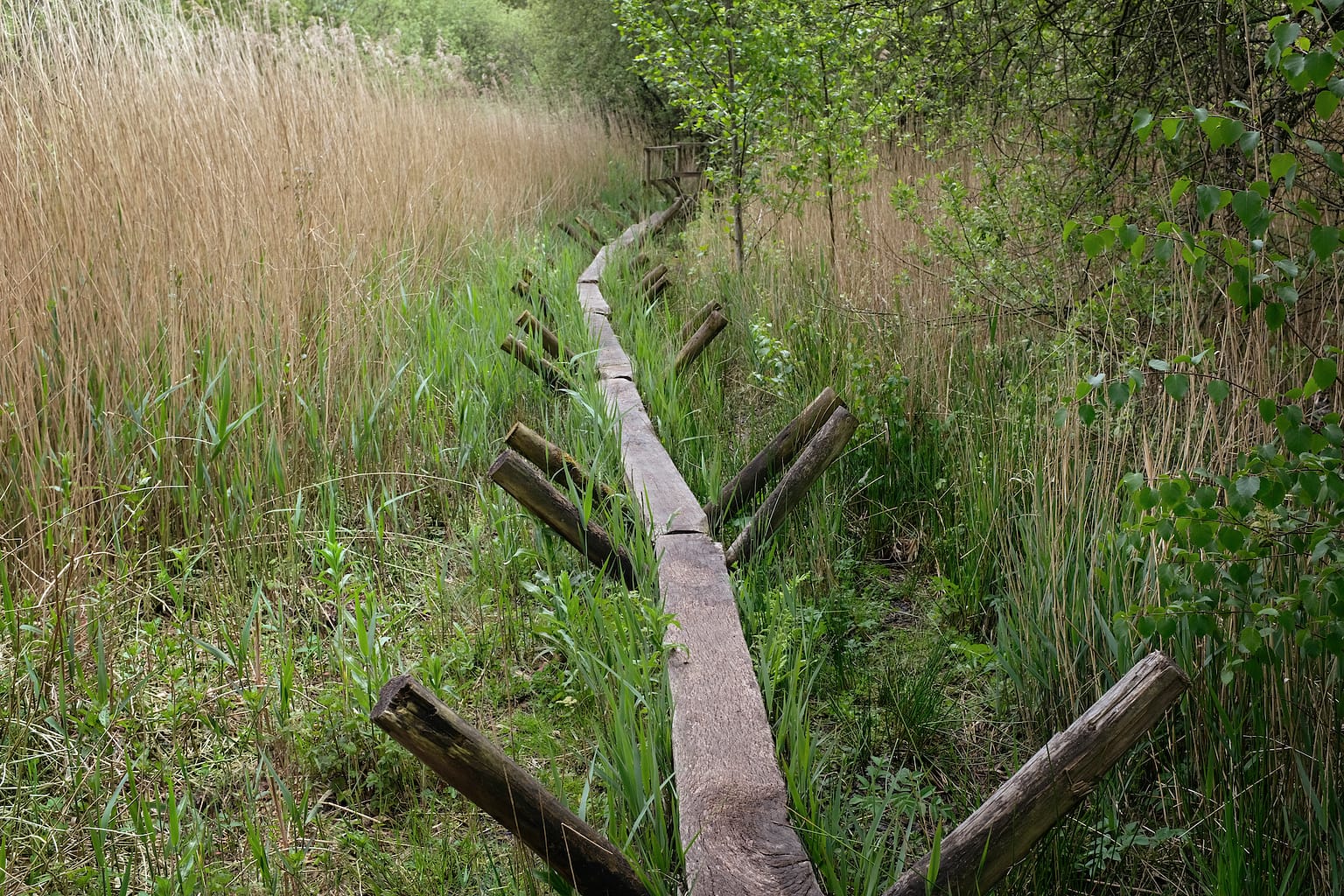
Bear with me this is a Neolithic story. The Somerset Levels are a magical place, rich with tales of King Arthur’s Avalon. The old British hero hung out here while taking pot-shots at the immigrant Saxon hoards. Overlooking these flatlands, the mystical hill of Glastonbury Tor rises in the distance. This is ancient land. Screaming swifts cut through the air feeding on flies, bitterns let out their low boom and lily pads flap lazily in the strong breeze. These are probably the same noises heard in the spring of 3807 BC when the Sweet Track was constructed.
The levels have always been waterlogged but way before the birth of the M5, those Neolithics needed to get around this liminal wet landscape. Maybe just to pop to the nearest Spar for some wildfowl or perhaps the local alehouse for a cheeky half of mead. The track runs for 2km and connects two higher bits of ground. This was the era when British woman and man were just starting to settle down and farm after a whole lot of nomadic wandering. What was slightly tricky, compared to your average path, was how to cross land that was more water than solid earth. The Sweet Track is therefore built of raised oak planks on a ash, lime and oak cross frame so they could keep their sandal clad tootsies dry. It’s narrow, maybe Neolithic folk walked sideways. Don’t forget the Neolithic era came before the Iron Age so there were no power tools, it was built with stone axes only.
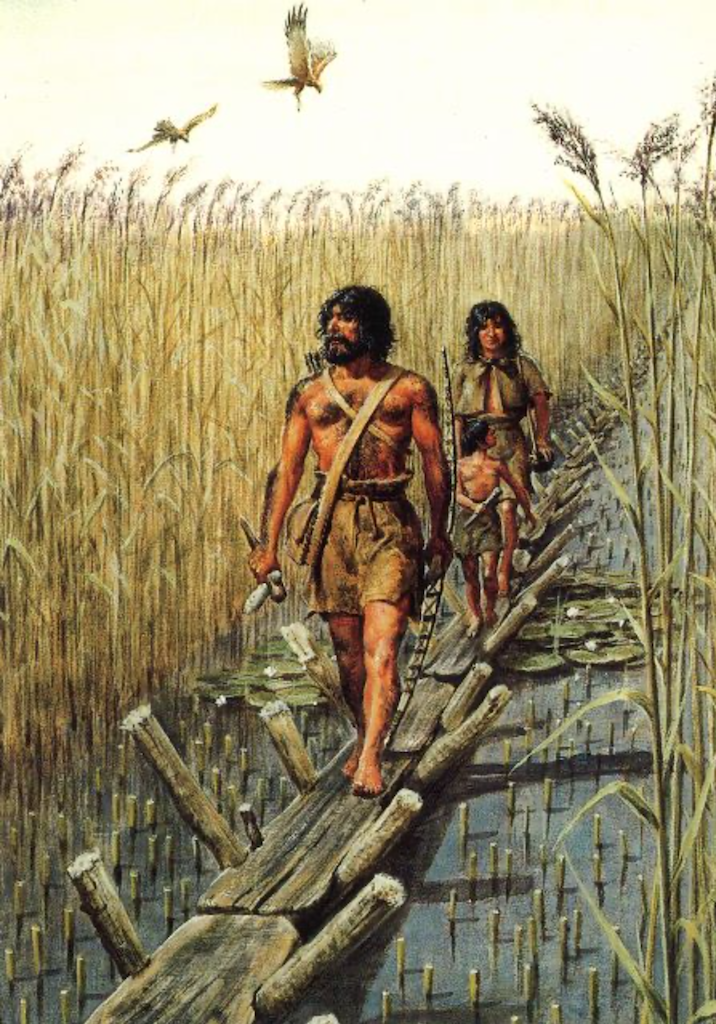
This isn’t the only track across the levels, although it is the most famous, there are numerous others from many periods through pre-history: Tinney’s, Garvin’s, Rowland’s. The Sweet Track itself was built on top of the earlier Post Track which predates it by 30 years and is the oldest track in the UK. Amazing. It was discovered in 1970 by a peat cutter called Ray Sweet and named after him. To encourage farm owners and track finders to come forward, they often named them eponymously. Until dendrochronology (tree ring dating) appeared, it was thought that many of these tracks were medieval because the peat soil has preserved the bogwood of these old pathways. On discovery, the wood often looks like it would be better used for a BBQ, so while the original timbers are safely logged in the British Museum, the wood here is a reconstruction following the original route.
This track is one of the few places in the UK that gives you a small tingling of what it must have been like to be alive 5827 years ago. It’s not currently on Google maps but there is a CrossFit class and a counselling service under the same name. How times change.
The fantastic illustration here was done by Edward Mortalmans. The 50s – 70s seem like a high point in archaeological illustration; breathing life into old stuff.
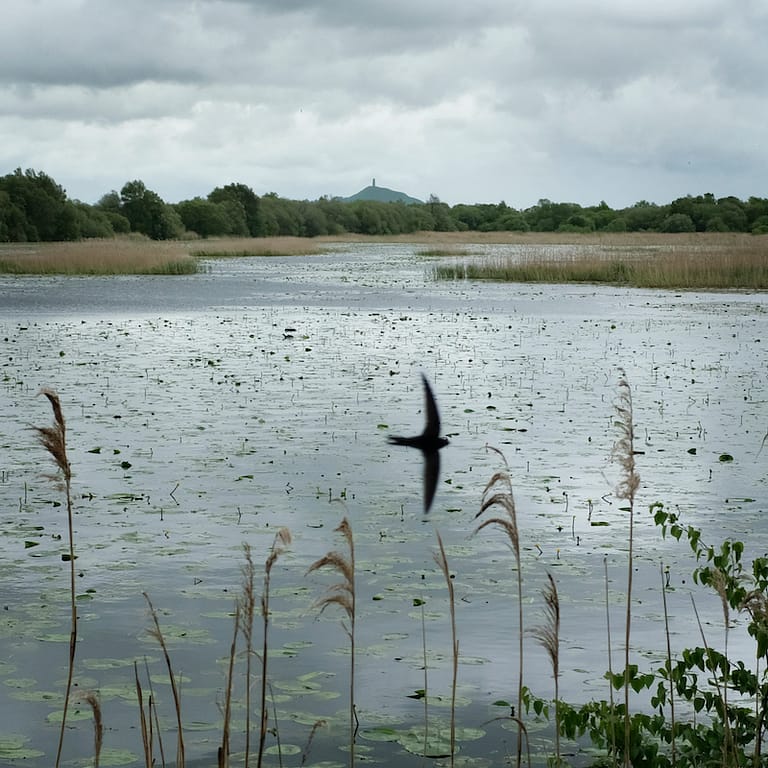

Bare with me this is a Neolithic story: The Somerset Levels are a magical place rich with tales of King Arthur’s Avalon. The old British hero hung out here while taking pot-shots at the immigrant Saxon hoards. Overlooking these flatlands, the mystical hill of Glastonbury Tor rises in the distance. This is ancient land. Screaming swifts cut through the air feeding on flies, bitterns let out their low boom and lily pads flap lazily in the strong breeze. These are probably the same noises heard 5826 years ago when the Sweet Track was constructed.
The levels have always been waterlogged but way before the birth of the M5, those Neolithics needed to get around this liminal wet landscape. Maybe just to pop to the nearest Spar for some wildfowl or perhaps the local alehouse for a cheeky half of mead. The track runs for 2km and connects two higher bits of ground. This was the era when British woman and man were just starting to settle down and farm after a whole lot of nomadic wandering. What was slightly tricky, compared to your average path, was how to cross land that was more water than solid earth. The Sweet Track is therefore built of raised oak planks on a ash, lime and oak cross frame so they could keep their sandal clad tootsies dry. It’s narrow, maybe Neolithic folk walked sideways. Don’t forget the Neolithic era came before the Iron Age so there were no power tools, it was built with stone axes only.

This isn’t the only track across the levels, although it is the most famous, there are numerous others from many periods through pre-history: Tinney’s, Garvin’s, Rowland’s. The Sweet Track itself was built on top of the earlier Post Track which predates it by 30 years and is the oldest track in the UK. Amazing. It was discovered in 1970 by a peat cutter called Ray Sweet and named after him. To encourage farm owners and track finders to come forward, they often named them eponymously. Until dendrochronology (tree ring dating) appeared, it was thought that many of these tracks were medieval because the peat soil has preserved the bogwood of these old pathways. On discovery, the wood often looks like it would be better used for a BBQ, so while the original timbers are safely logged in the British Museum, the wood here is a reconstruction following the original route.
This track is one of the few places in the UK that gives you a small tingling of what it must have been like to be alive 5827 years ago. It’s not currently on Google maps but there is a CrossFit class and a counselling service under the same name. How times change.
The fantastic illustration here was done by Edward Mortalmans. The 50s – 70s seem like a high point in archaeological illustration; breathing life into old stuff.



